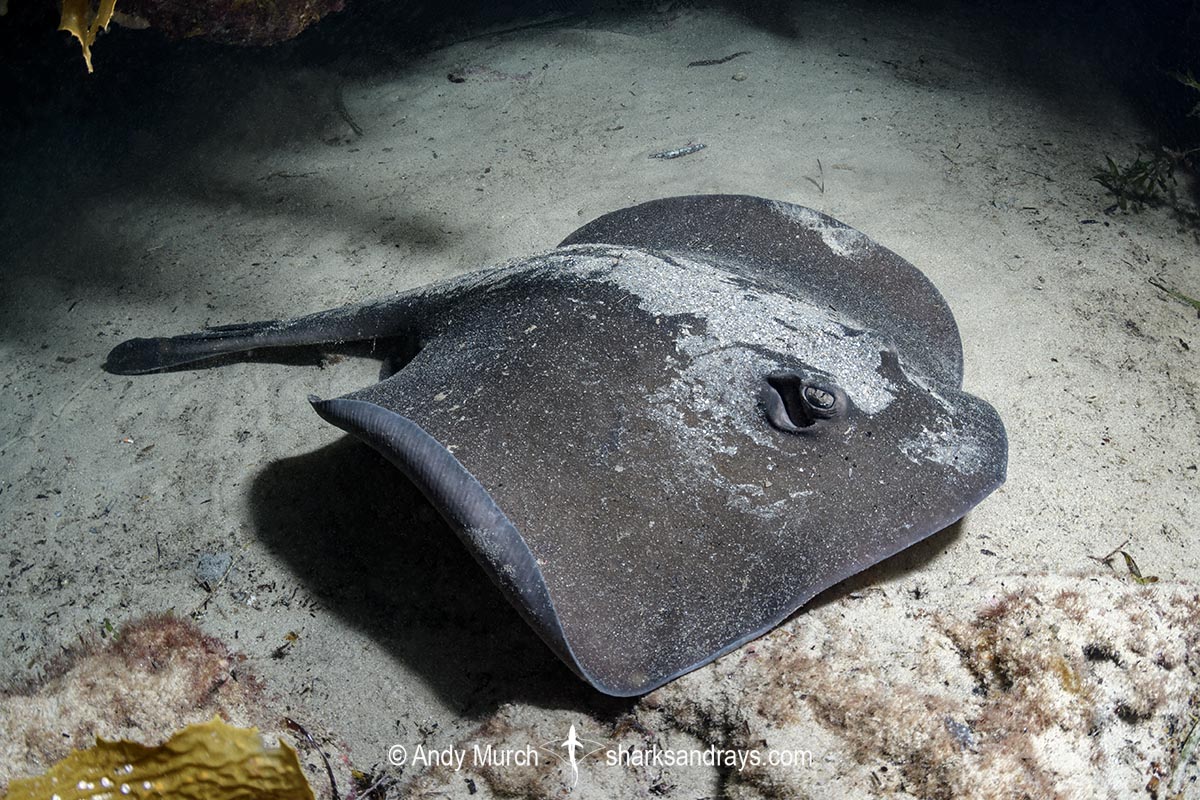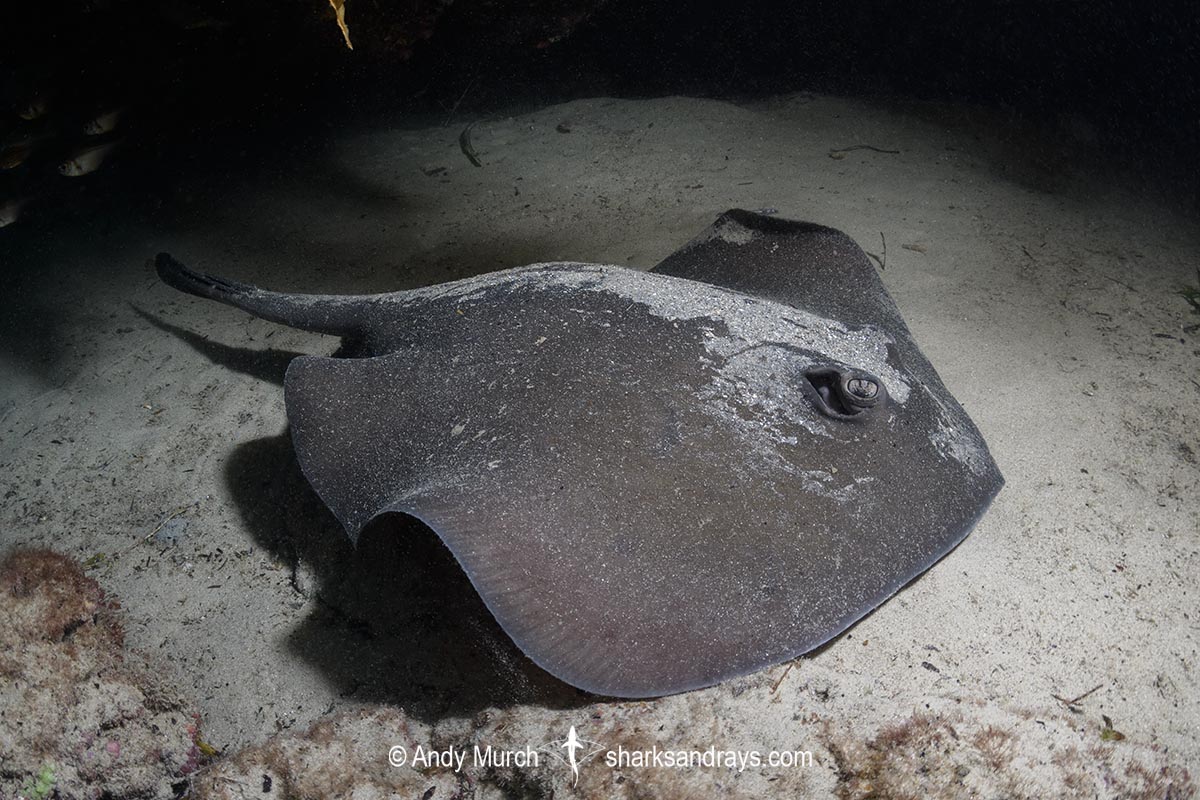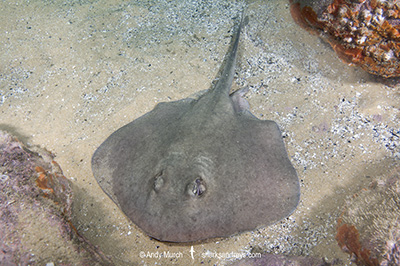Common names
Western Shovelnose Stingaree.
Binomial
Trygonoptera mucosa.
Synonyms
Urolophus mucosus
Identification
A small to medium sized stingaree with a subcircular that is slightly wider than long. Snout broadly rounded or obtusely angular, without an extended tip. Anterior margins of disc convex, apices broadly rounded. Disc completely smooth.
Eyes medium-sized; orbit length 0.2-0.27 x snout length. Spiracle origin almost below anterior margin of eye. Mouth small. 7-9 oral papillae on mouth floor. Nasal curtain skirt shaped, not extended into a distinct lobe, posterior margin heavily fringed. Broad, fleshy lateral lobe present on each nostril.
Tail relatively long, 0.71-0.91 x disc length, oval in cross-section, depressed anteriorly. Dorsal fin absent. Caudal fin narrow and long.
Colour
Dorsum dark greyish-brown, beige, or brownish-black, sometimes with small dark or beige flecks. Dorsum may be darker centrally. Caudal lobe dusky. Ventrum white or yellowish, sometimes with a broad grey/brown lateral margin and dark blotches.
Size
Total length at least 47cm. Length at birth approximately 17cm.
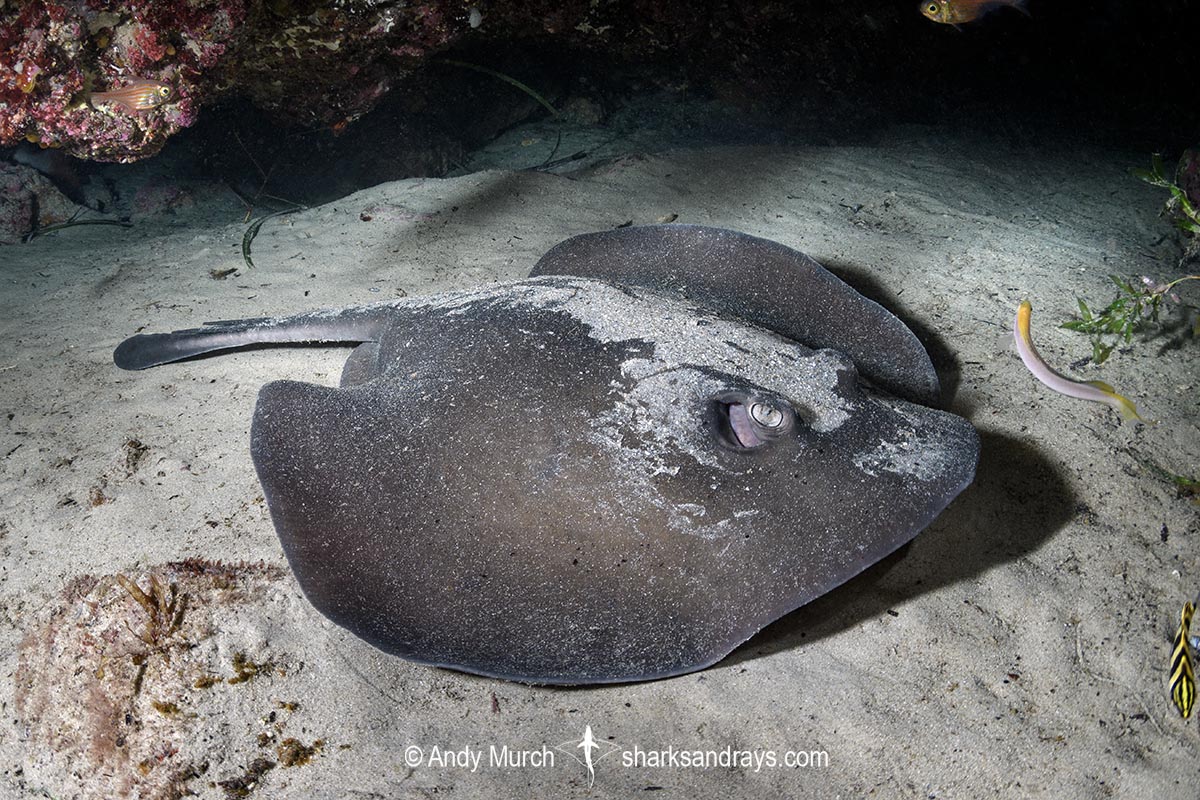
Conservation Status
LEAST CONCERN
The western shovelnose stingaree is a small ray that is not directly targeted, but is a common bycatch component in scallop and prawn fisheries that operate in the northwestern most part of its range. However, much of its range within the Great Australian Bight is not fished.
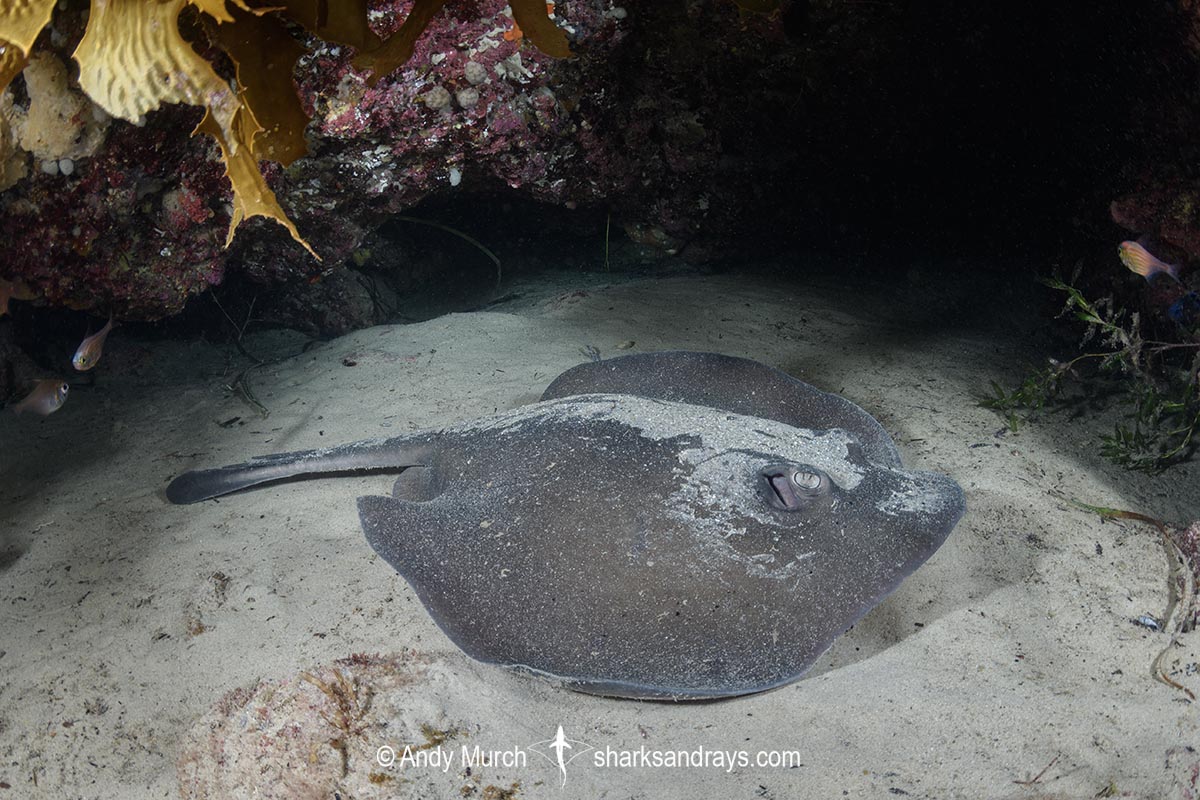
Habitat
Temperate seas. Found on sandy substrates, often adjacent to seagrass beds. Usually shallower than 20m. Recorded to at least 40m. Possibly to 95m.
Distribution
Endemic to Southern Australia. North of Perth to Adelaide.
Reproduction
Viviparous, probably with trophodermic nutrition. Litter size 1-2 pups after a 10-12 month gestation period. Parturition occurs in Autumn.
Diet
Diet consists mainly of polychaete worms and small crustaceans.
Behavior
Poorly known. Often found resting under overhangs during the day.
Reaction to divers
Somewhat easily approached with non-threatening movements.
Diving logistics
At the eastern edge of its range, the western shovelnose stingaree is relatively common at shallow dive sites from Adelaide to Rapid Bay.
What’s new
View our full list of updates
Similar species
Eastern Shovelnose Stingaree Extremely similar, but the eastern shovelnose stingaree is significantly larger.

